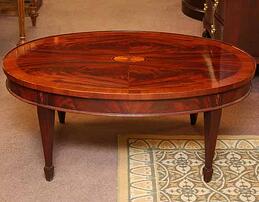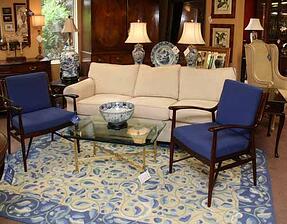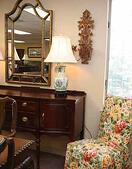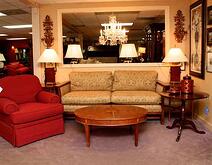"I'm going contemporary!" She was seventy, if she was a day, a prim white-haired Yankee by birth and breeding. She thrust a photo at me and added, "I just ordered this camelback sofa and I need some funky end tables to go with it."
"Contemporary" is the hot new word in decorating. Queen Anne is out. So is chintz. Ruffles are a crime. Pyramids of pillows are passé. Most of our customers, young and old, are seeking a look that is sleek, sharply-defined and serene.
What they are calling contemporary is really classic design. Barbara Barry started the trend a decade ago when she created an amazing sofa with a sharply contoured arm, borrowing from a style that had been very traditional in England. Mitchell Gold took the same look and outlined the sofa in nailhead trim. That's been a huge hit for his stores.
From Baker to Crate and Barrel, you can now buy a variation on that theme in almost every furniture store in the U.S. They're calling it transitional. Maybe people are tired of the word - even the concept - of traditional. You, our customers, are calling it contemporary. It looks and feels new and fresh.
 True contemporary is Lucite. Contemporary is metal, plastic and modular sofas. Visit Roche Bobois, where the showroom is filled with strangely curved pieces of furniture sitting low on the floor like giant slugs. Works in Europe. A tough sell in New England. That's contemporary.
True contemporary is Lucite. Contemporary is metal, plastic and modular sofas. Visit Roche Bobois, where the showroom is filled with strangely curved pieces of furniture sitting low on the floor like giant slugs. Works in Europe. A tough sell in New England. That's contemporary.
At Furniture Consignment Gallery, we might dabble with the ultra-modern every now and then. We have no law against Lucite. What we do best, though, is high-end, traditional re-interpretations of the finest furniture ever made. Call it what you may - traditional, transitional, contemporary, modern - we know what you mean.
So when Yankee matron with the twin-set cardigan and the sensible shoes tells me she is looking for a more modern look for her retirement penthouse in downtown Boston, we have exactly what she wants on our floor.

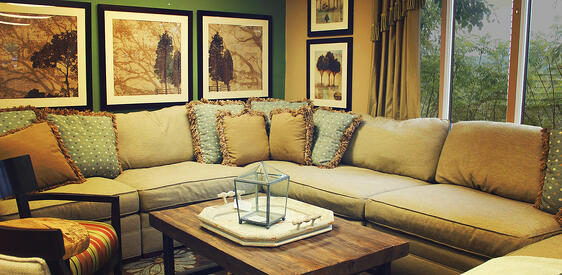
 She burst into the showroom like a dervish of interior design, bracelets jangling and coattails billowing. Trailing closely behind were a husband, a daughter and a soon-to-be son-in-law who seemed cowed by this new and unstoppable force of nature taking charge of his life.
She burst into the showroom like a dervish of interior design, bracelets jangling and coattails billowing. Trailing closely behind were a husband, a daughter and a soon-to-be son-in-law who seemed cowed by this new and unstoppable force of nature taking charge of his life.  They met as teenagers at a clam shack on the Cape, and fell in love. For the last twenty years, they've worked hard to build a marriage, careers, and a family. On Thursday, the couple and their two young sons stopped by our showroom shortly after leaving their lawyer's office. "We just bought a house!" the wife exclaimed. "On the Cape!"
They met as teenagers at a clam shack on the Cape, and fell in love. For the last twenty years, they've worked hard to build a marriage, careers, and a family. On Thursday, the couple and their two young sons stopped by our showroom shortly after leaving their lawyer's office. "We just bought a house!" the wife exclaimed. "On the Cape!" 
